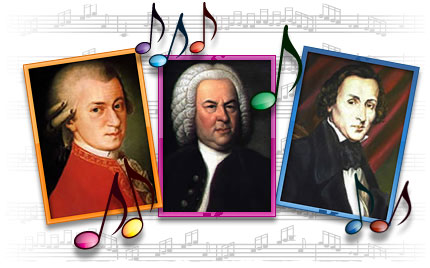Music is major part of our everyday life.
Music also has a long, complex and captivating history. It may predate language, and most certainly predates the written word. It is found in every known human culture, both past and present, varying wildly between certain periods and locations on the globe. The music of every culture is influenced by all other aspect of that culture, such as social and economic organization, climate, and access to technology.
The development of human music occurred against the backdrop of natural sounds like the lapping of ocean waves, the rippling of river water, the singing of birds and sounds created by other animals. Prehistoric music, more commonly referred to as primitive music, is the name given to all music produced by preliterate cultures, beginning somewhere in very late geological history.
The prehistoric period is considered to have ended with the creation of writing, and with it, by definition, prehistoric music. "Ancient music" is the term given to the music that followed. This music was produced by various early cultures, particularly Greeks, Romans, Egyptians, Mesopotamians and citizens of the Muslim world, as wel
l as Asiatic cultures.Following ancient music, came "early" music which is a very general term referring to music in the European classical tradition from the fall of the Roman Empire in 476, until the end of the Baroque period in the 18th Century. Music within this enormous time span was extremely diverse, encompassing multiple cultural traditions throughout a wide geographic region. What unified these many cultures in the Middle Ages was the Roman Catholic Church, and its music served as a focal point for music development for the first centuries of this period.
The Medieval period (from the 9th to the 14th Centuries) was rich in musical history as attested by the artistic renditions of instruments, writings about music, and other historical references. The only collection of music which has survived from pre-900 AD to the present is the liturgical music of the Catholic Church, the largest part of which is called the Gregorian chants.
Renaissance music followed the medieval era, but the beginning of Renaissance music is not as clearly marked as the start of the Renaissance in the other arts, and began, not in Italy, but in northern Europe specifically central France, the Netherlands, and Belgium. The invention of the printing press had an immense influence on the dissemination of musical styles and by the 15th century, composers and singers from these Low Countries begin to spread over all of Europe.
Baroque music became quite popular after 1600, and instrumental music became dominant. Although strong religious musical traditions continued, secular music came to the forefront with the development of the sonata, the concerto and concerto grosso. In Baroque music the keyboard, particularly the harpsichord, is the dominant instrument. The three most outstanding composers of this period are J.S. Bach, G. F. Handel and A. Vivaldi.
The early Classical period was ushered in by the Mannheim School which exerted a profound influence on Joseph Haydn, and through him, on nearly all subsequent European music. Wolfgang Mozart was the central figure of this period and his phenomenal and varied output defines our perception of the Classical era.
Ludwig van Beethoven and Franz Schubert were transitional composers who led Europe into the Romantic period with their expansion of the existing genres, forms and even uses of music. During this Romantic period, music became more expressive and emotional. By the late 19th century, there was a dramatic expansion in the size of the orchestras, and in the role of concerts as part of a rapidly growing urban society. Strauss, Brahms, Tchaikovsky, Verdi and Wagner comprised a powerful group of Romantic composers. A prominent feature of late 19th century music is its nationalistic fervor, as exemplified by figures like Dvorak, and Sibelius.
The 20th Century saw a music revolution as radio gained popularity worldwide and new media and technologies were created to record, capture, reproduce and distribute music. Because music was no longer limited to concert halls and clubs, it became possible for music artists to gain fame and fortune quite quickly.
And music became more mobile with the use of headphones, CD players, and iPods. Music of the 20th Century brought a new freedom and wide experimentation with styles and forms that challenged the accepted rules of earlier musical periods. Heavy metal music and rap entered the picture and joined hip-hop, jazz, country/western, ballads, folk, acid rock, Christian rock and a variety of other genres to create today's fascinating world of music.
----------------------------------------------------------------------------
For a music store filled with constructive, informative and useful information about all genres of music, please visit [http://www.MusicJaunt.com]
Article Source: http://EzineArticles.com/?expert=J._Larry_Denton
http://EzineArticles.com/?A-Few-Notes-On-the-History-of-Music&id=514665



Thank you!
Please share Piano Wizard with your friends and help spread the joy.